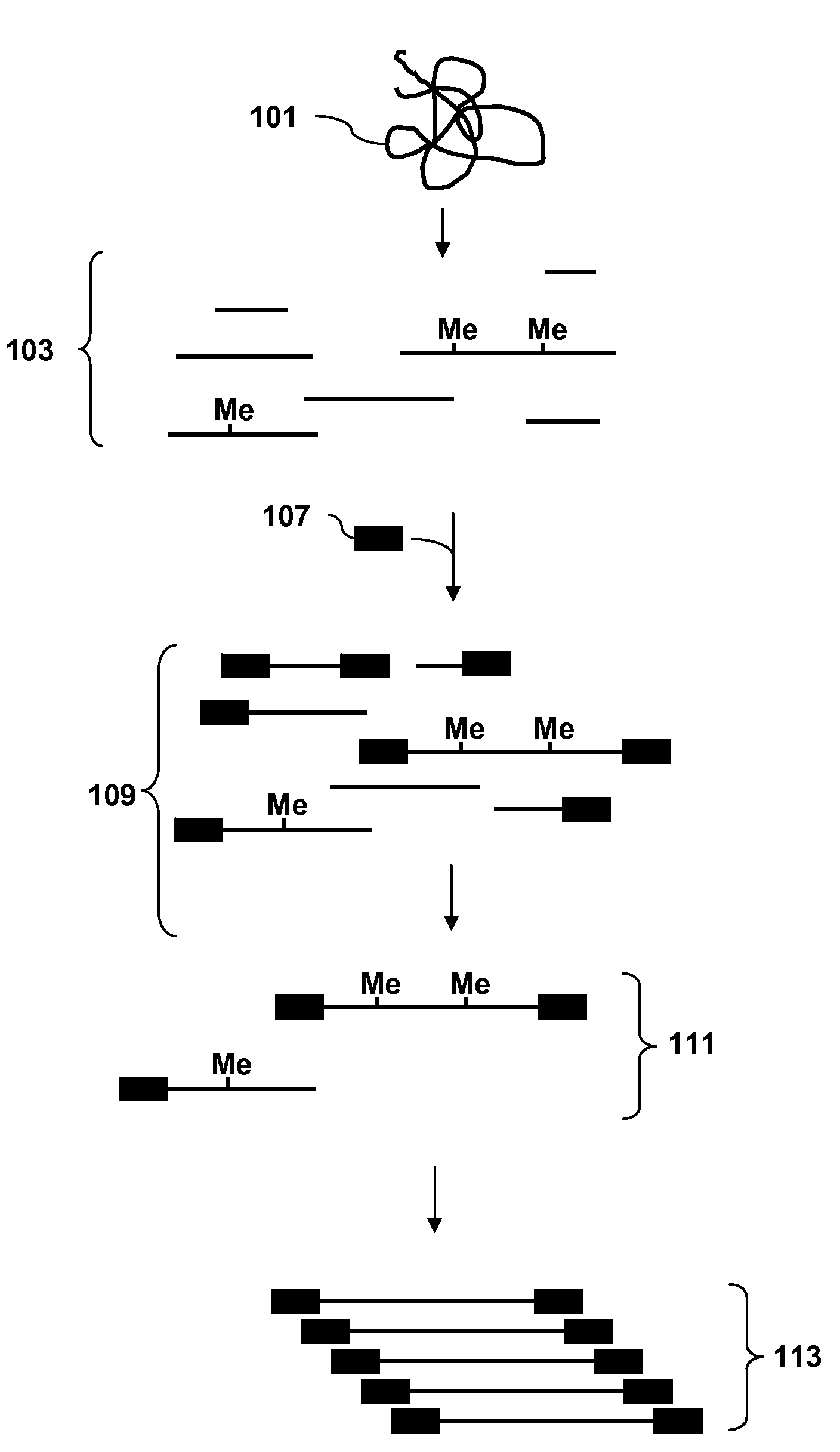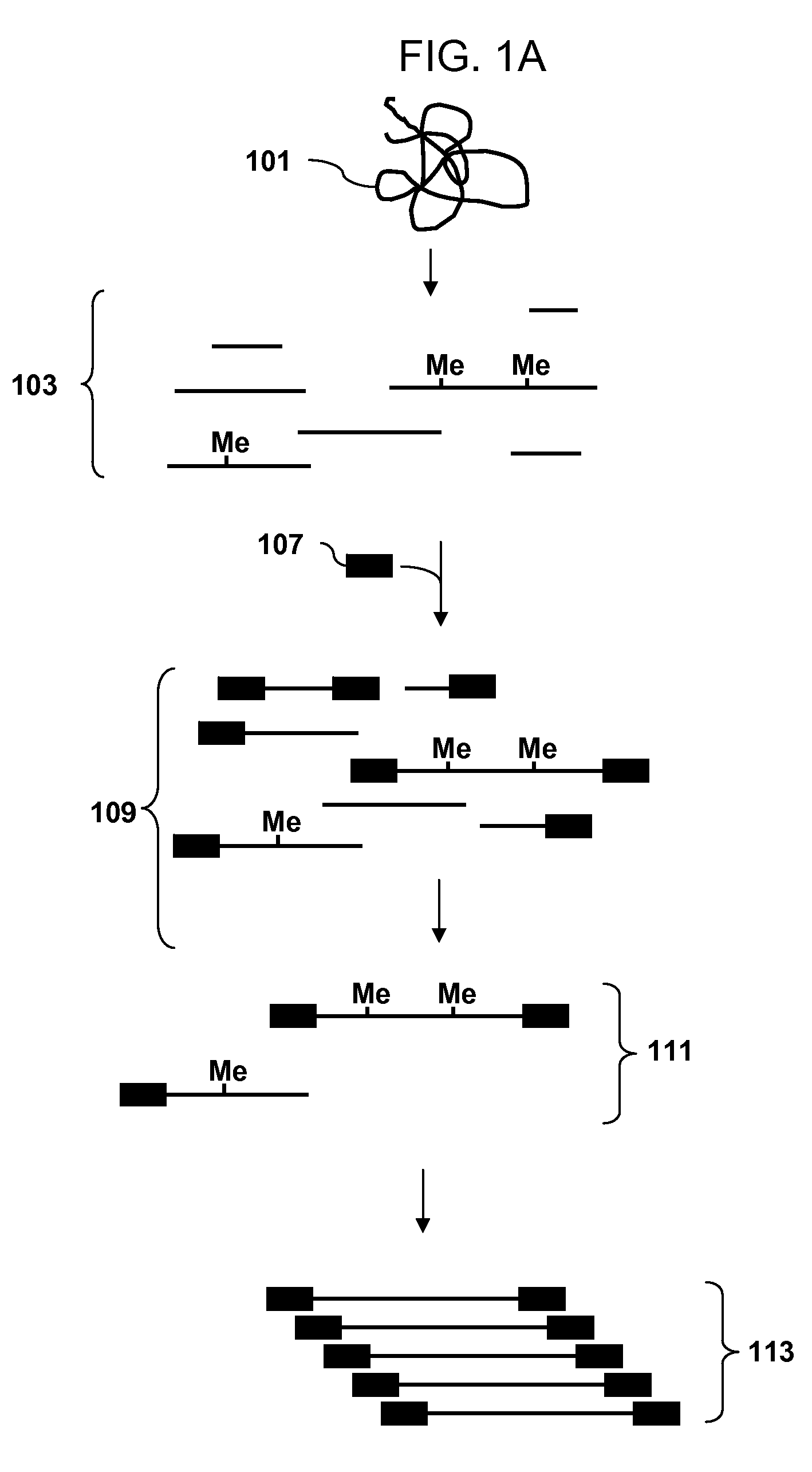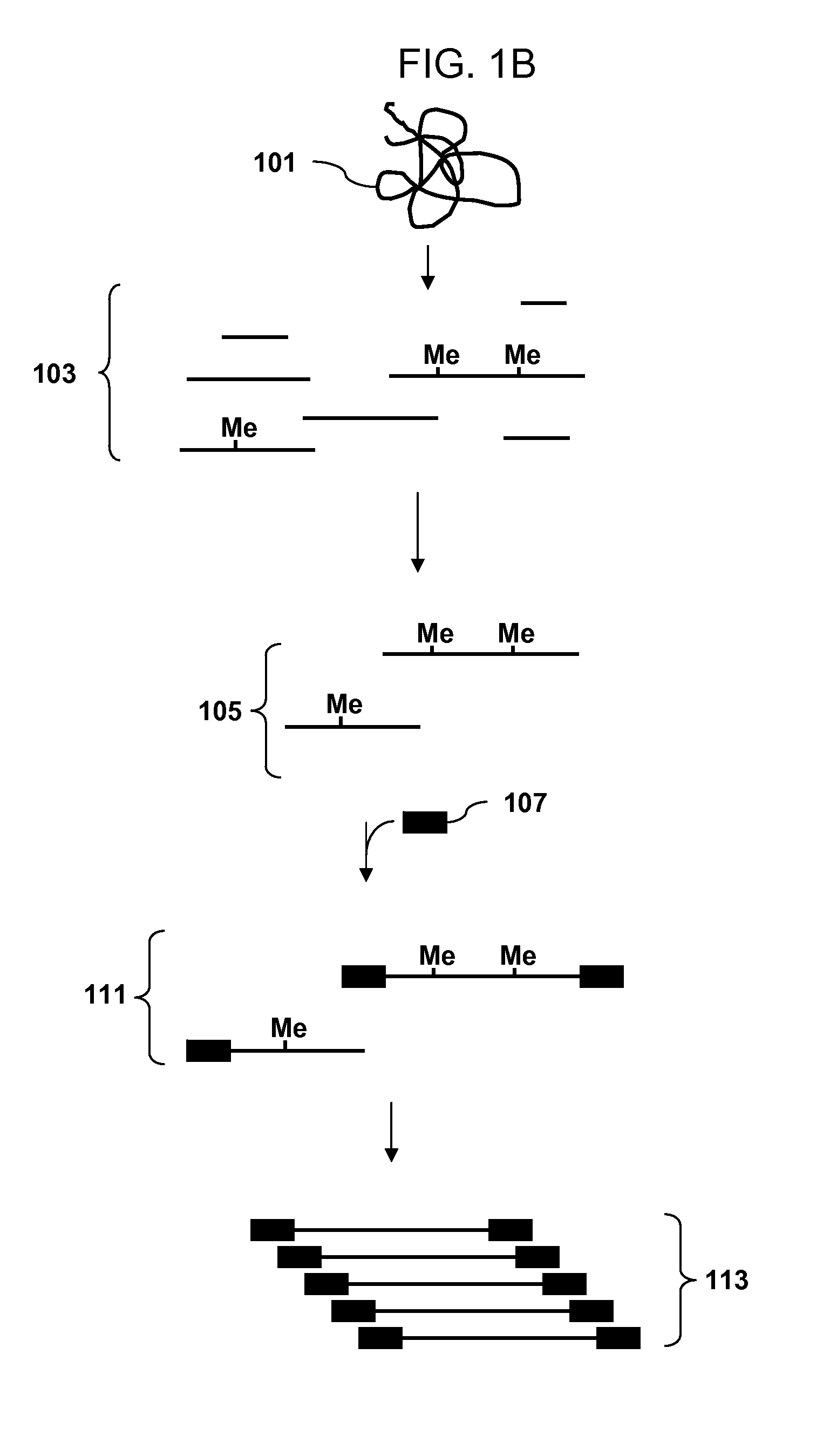Analysis of methylation using selective adaptor ligation
a technology of adaptor ligation and methylation, which is applied in the field of arrays and methods for detecting methylation of nucleic acids, can solve the problems of genomic instability, alterations in the normal methylation process,
- Summary
- Abstract
- Description
- Claims
- Application Information
AI Technical Summary
Benefits of technology
Problems solved by technology
Method used
Image
Examples
example 1
[0107]A recommended protocol for IP using ab1884 (Abcam). Use 0.5 to 1 μg of fragmented genomic DNA. Dilute fragmented DNA to 100 μl for a final concentration of 0.15% SDS, 1% triton x-100, 150 mM NaCl, 1 mM EDTA pH8.0, 0.5 mM EGTA pH8.0, mM Tris pH8.0, 0.1% BSA, 7 mM NaOH, anti-5mC (up to 30 ug of antibody for saturating conditions), and Prot A / G beads. Rotate overnight at 4° C. Wash 2× with 0.1% SDS, 0.1% DOC, 1% triton, 150 mM NaCl, 1 mM EDTA pH8.0, 0.5 mM, EGTA pH8.0, 10 mM Tris pH8.0. Wash 1× with 0.1% SDS, 0.1% DOC, 1% triton, 500 mM NaCl, 1 mM EDTA pH8.0, 0.5 mM, EGTA pH8.0, 10 mM Tris pH8.0. Wash 1× with 0.25 M LiCl, 0.5% DOC, 0.5% NP-40, 1 mM EDTA pH8.0, 0.5 mM, EGTA pH8.0, 10 mM Tris pH8.0. Wash 2× with 1 mM EDTA pH8.0, 0.5 mM EGTA pH8.0, 10 mM Tris pH8.0. Elute in 1% SDS, 100 mM NaHCO3. Purify the DNA and use the isolated DNA for PCR. Analyze the amplicons by hybridization to an array.
example 2
[0108]Obtain a genomic DNA sample. Fragment the sample with Dde I in NEBuffer 3 at 37° C. Heat inactivate the enzyme at 65° C. for 20 minutes. Ligate an adaptor to the fragments. The adaptor has a primer binding site and a single stranded overhang that is 3′-ATT-5′ and will ligate efficiently to the fragment overhangs that have a 5′ TAA-3′ overhang generated by cleavage, but not to the fragment overhangs that have TTA, TCA or TGA. Immunoprecipitate fragments that contain 5-meC using an antibody to 5-meC. Clean up the immunoprecipitated fragments and amplify by PCR using a primer complementary to the primer binding site in the adaptor. Do the PCR in the presence of dUTP so that uracil is incorporated into the DNA. Treat the amplified DNA with uracil DNA glycosylase and APE 1 to fragment the PCR amplicons. End label using terminal deoxynucleotidyl transferase and Affymetrix′ biotin-labeled DNA labeling reagent (DLR). Hybridize the labeled fragments to an array, stain with biotinylated...
PUM
| Property | Measurement | Unit |
|---|---|---|
| temperature | aaaaa | aaaaa |
| temperature | aaaaa | aaaaa |
| temperature | aaaaa | aaaaa |
Abstract
Description
Claims
Application Information
 Login to View More
Login to View More - R&D
- Intellectual Property
- Life Sciences
- Materials
- Tech Scout
- Unparalleled Data Quality
- Higher Quality Content
- 60% Fewer Hallucinations
Browse by: Latest US Patents, China's latest patents, Technical Efficacy Thesaurus, Application Domain, Technology Topic, Popular Technical Reports.
© 2025 PatSnap. All rights reserved.Legal|Privacy policy|Modern Slavery Act Transparency Statement|Sitemap|About US| Contact US: help@patsnap.com



